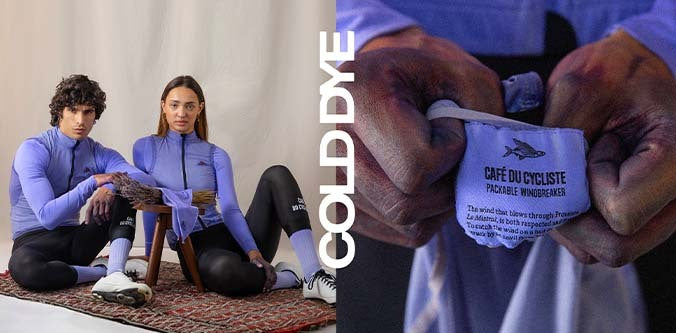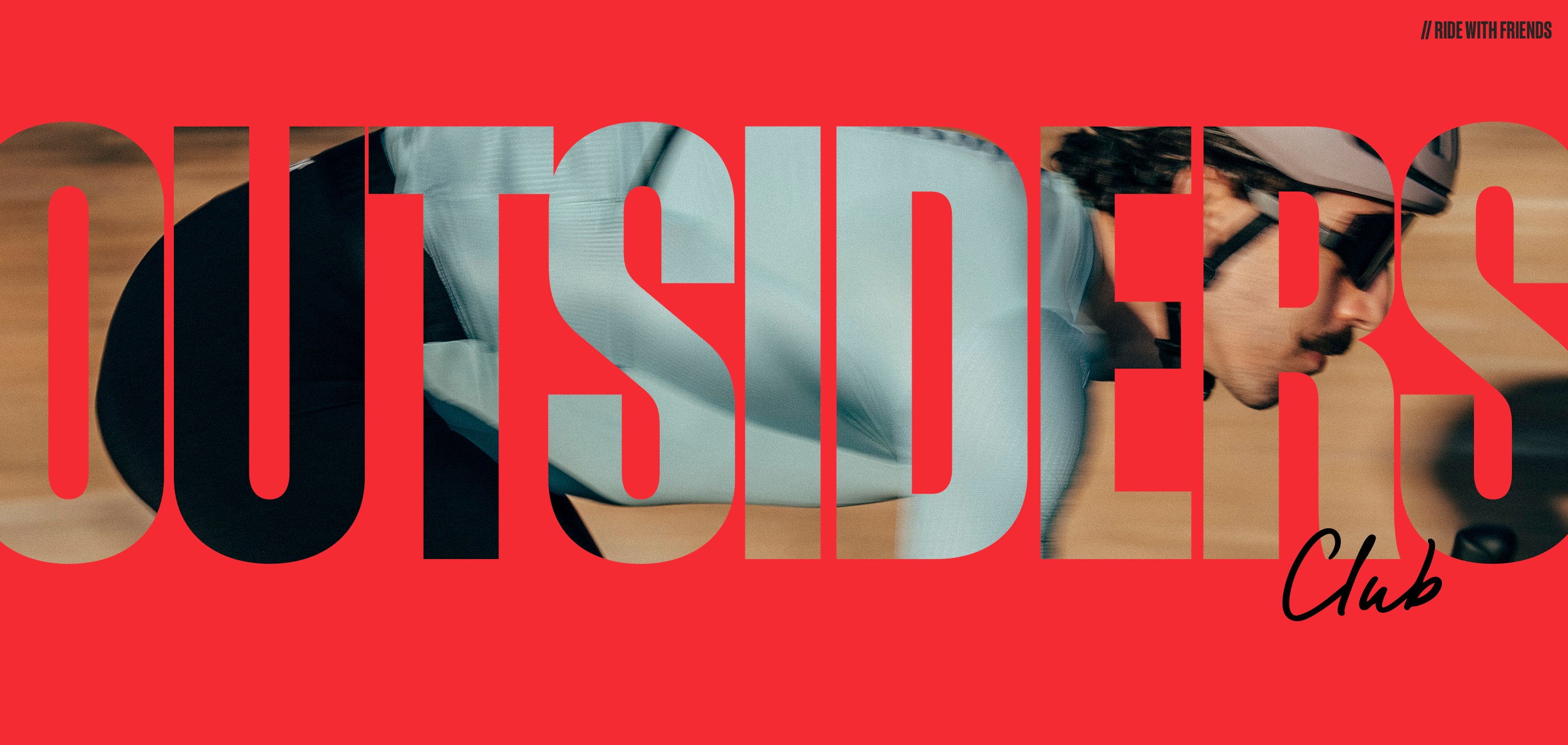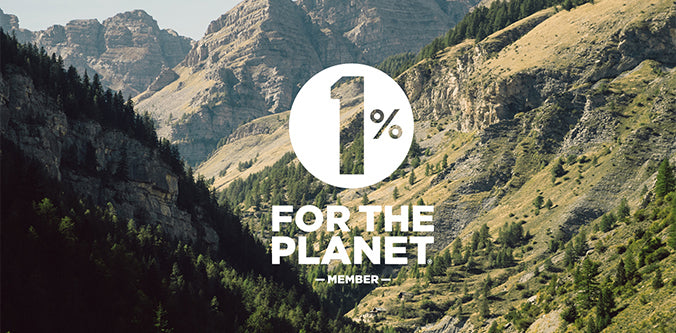Guillaume Néry dives into the UTMB Nice.

Café du Cycliste Caravan athlete swaps freediving for trail-running and a 55-kilometre journey into the unknown…

Caravan athlete and champion freediver Guillaume Néry is known for his silent descents, suspended between two heartbeats, somewhere between light and darkness. We caught up with him at the Nice Côte d'Azur by UTMB, where he was competing in the 55-kilometre event: 2,500 metres of elevation gain, a sun-up start and a finish by the sea. A first long-distance trail race, decided upon almost on a whim, it would be a journey into himself.
“Walking and running in the mountains is something I’ve always done,” he begins. As a child, he hiked from the age of four with his parents. Later, the bike took on a major role. Then life reshuffled his priorities: the birth of his son, Kai, just a few weeks ago, and that vital need to “do some sport every day”. So he runs every other day and adds in some strength training to “stay in shape” while waiting to resume more serious training. Without knowing it, he’s been preparing for something new.

The spark came from Léa and Maxime, two friends who have been won over by running. They took him out for runs, then for a reconnaissance of the first section of the race – 32 kilometres, further than he had ever run on trails. “I was surprised to see how I finished, I was still feeling good,” he says. With the race approaching, his momentum is good. All that’s left is to dare. A message to the organisers, a last-minute place… the adventure is on.
A Diesel Strategy
At the start, up on the heights between the sea and the pines, one word keeps looping in his head: “Efficiency.” Stay in zone 2 for the first 10 kilometres, accept being slow, almost against the tide of collective euphoria. That’s the condition for reaching the end. After La Turbie, the race tips into “real trail running”: the paths rise towards Mont Agel, then the Col de la Madone. The terrain becomes playful, the line of runners creates bottlenecks, you have to overtake in bursts, read the trail to the millimetre, seize the openings. “I found it really fun, almost animal,” Guillaume says.
On the road, in a marathon, the monotony sometimes causes your mind to drift," he says. “In trail running, that’s impossible. Every stride counts, every footfall has a consequence. It’s very close to freediving, where you can’t let your mind wander. Everything is ultra-precise.” At the Col de la Madone, the engine has warmed up. The next climb – the Bodon – then the long descent towards Peille and Peillon bring on that unique state: controlled euphoria, total focus, the body responding, the legs moving easily. “Everything was perfect, but I kept in mind that the highs often come before the lows. When everything’s going really well, you have to make the most of it, because it doesn’t last.” The low point comes around the 30th kilometre. Fatigue descends, the pains wake up. Beyond 32 kilometres, he enters unknown territory in trail running – no landmarks, no guarantees. “In the moment, it’s hard to believe that it can get better,” he says. So you slow down a bit, drink, eat, chip away at the metres. The mind drifts towards quitting; he insists on keeping moving.
An Inner Dialogue
In this in-between space, he uses a precious tool: a mental exercise suggested by Christophe, a longtime friend, former member of his freediving safety team, sports coach and psychological coach who's run the Diagonale des Fous and the UTMB. The exercise is simple but subtle: observe the thoughts that arise (“I’m in pain”, “I won’t make it”), recognise the direction they want to take you, then establish a dialogue: “Yes, I’m in pain, but it’s temporary. Let it pass.” Take back control of the inner narrative. Call out the ego when it appears (“I absolutely have to finish under nine hours!”) and ask: “Why? What do you have to prove?”
Underwater, he knows this work on focus. On land, he discovers how it can magnify effort. “It’s real introspection. You can train your body; the unknown is the mind," he says. "And that’s universal. It can helps you in a race, but also in life.” Then, without warning, the shift. On the climb where we see him, the pain ebbs, the legs respond. “I was in pain... and then I wasn’t in pain any more.” From kilometre 38 almost to the finish, it’s a rebirth: he runs the descents, pushes on the flats, holds the rhythm. The most intense emotion won’t come under the arch at the finish, but here, in full flight, with the feeling of being exactly in the right place, at the right pace.

The final difficulty turns out, paradoxically, to be urban. The last three kilometres, on tarmac along the seafront, erase the magic of the trail and bring him back to a "classic kind of effort.” The mind knows it’s almost over, and that’s exactly what makes those minutes feel longer. Once he crosses the line, there’s no outpouring of emotion: the important part was in that earlier moment of grace. Before the race, he had targeted between eight and ten hours. He finishes in 9 hours, 11 minutes. During that flow phase, a small voice was whispering, “Try to go under nine hours,” but Guillaume was as amused as he was wary of it. The ego wasn’t invited, but it always finds a way in. Noticing it, naming it, is already taming it. The watch stops, the race is done, the experience intact.
Guillaume is often asked what connects freediving to cycling and trail running. In freediving, everything is concentrated: very short, extremely intense; on a bike or in trail running, that same intensity unfolds over hours, a state to explore rather than fleeting enlightenment. “It’s maybe the continuation of what I go looking for underwater, but I have more time to experience it.” In his view, there's acompatibility between cycling and trail running. “In marathons, the bike isn’t much help. In trail running, it’s very complementary. Lots of trail runners ride to build up endurance and muscle in a varied way.” Good news for this cyclist at heart: his rides will no longer come “at the expense” of running in the mountains.

Guillaume now has an appetite for trail – and it's big. He talks about “real big endurance”: those formats where you start at sunset, cross the night, and welcome the dawn still moving. Why not a 110 kilometres around Nice with 5,000 metres of climbing next year? The idea of a more “mountainous” 50 kilometres as preparation tempts him too. And on two wheels, there's a growing desire for 200- or 250-kilometre rides, or multi-day tours: “Not necessarily racing, but to enter a different way of riding,” he says. What motivates him is not so much performance as exploration: changing the scale of time, space and awareness. Finding that sweet spot where technical mastery, endurance and clarity come together.





























